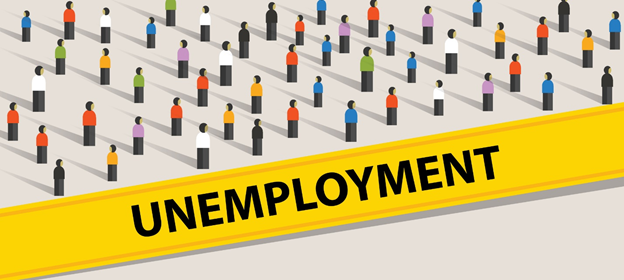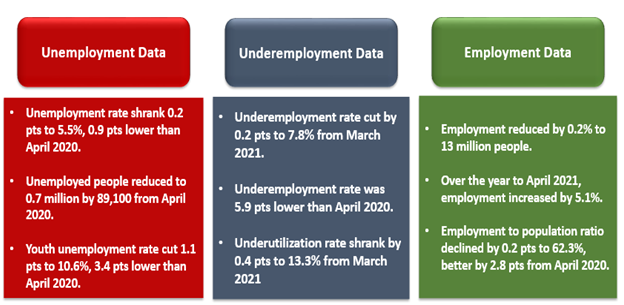Summary
- The Australian Unemployment rate has fallen to 5.5% as per the Australian Bureau of Statistics. The current statistic is slightly above the pace at the start of the COVID-19.
- The federal budget, presented last week, included a plan to increase employment, with a foresight of more taxes after the end of the JobKeeper subsidy.
- The JobKeeper subsidy ended on 28 March 2021. However, this has not resulted in a much-anticipated spike in job loss.
The Australian Bureau of Statistics (ABS), Labour Force, released its monthly survey unemployment data on 20 May 2021. The data reflects that the seasonally adjusted unemployment rate fell by 0.2 percentage points (pp.) to 5.5 % between March and April 2021. This is the sixth consecutive fall in the unemployment rate. It had fallen from 6.9% in October 2020. The current statistic is 0.2 pp. above the start of the COVID-19. The unemployment rate had hit its peak of 7.4% in July 2020.

Source: © Bakhtiarzein | Megapixl.com
ALSO READ: ASX Indices Witnessed Recovery Led By Lower Unemployment Rate
Strengthen your Portfolio with Kalkine LITE; Now Available at $19.99 Only
In seasonally adjusted terms, Labour Force Survey Results in April 2021 were:

Copyright © 2021 Kalkine Media (Data Source: ABS Labour Force Survey, dated 20 May 2021)
The pandemic-induced JobKeeper subsidy ended on 28 March 2021. However, the end of JobKeeper did not result in a spike in job loss, as expected.
The underemployment rate has gone down to 7.8% in April 2021, 1.0 pp. below the pre-COVID-19 level. Even the youth unemployment rate is at its lowest level ever since the GFC (Global Financial Crisis).
The data reflects a substantial increase in employment of young men and women in recent months. It is a good indicator, keeping in mind that the federal budget included a plan to push unemployment below 5%.
So, did the end of the subsidy really impact the unemployment rate?
The federal budget, presented last week, included a plan to get a further 250,000 people into work. It emphasised this with a foresight of more taxes and lower welfare pays after the end of the JobKeeper subsidy.

Source: © Peart | Megapixl.com
But the end of JobKeeper subsidy has not shown any visible impact on employment between March and April, as feared. While part of the fall in employment may relate to the end of JobKeeper, it could also reflect a usual month-to-month variation or some more notable than usual seasonal changes like 2020.
GOOD READ: All you need to know about JobKeeper Payment scheme
Labour Force did not change the survey questionnaire during the pandemic. Anyone who indicated in April that they did have paid work after JobKeeper must have been considered ‘employed’. Therefore, some respondents could still be ‘employed’ in May. Therefore, the critical question is whether people in JobKeeper-supported roles who no longer have paid work were considered employed.
A detailed update is due on 27 May 2021. It is expected to provide deeper insights into regional labour market information. Conclusive unemployment numbers shall only be available after May data is published.
SUGGESTED READ: Australia’s wage growth shows signs of recovery, but public sector remains fragile



